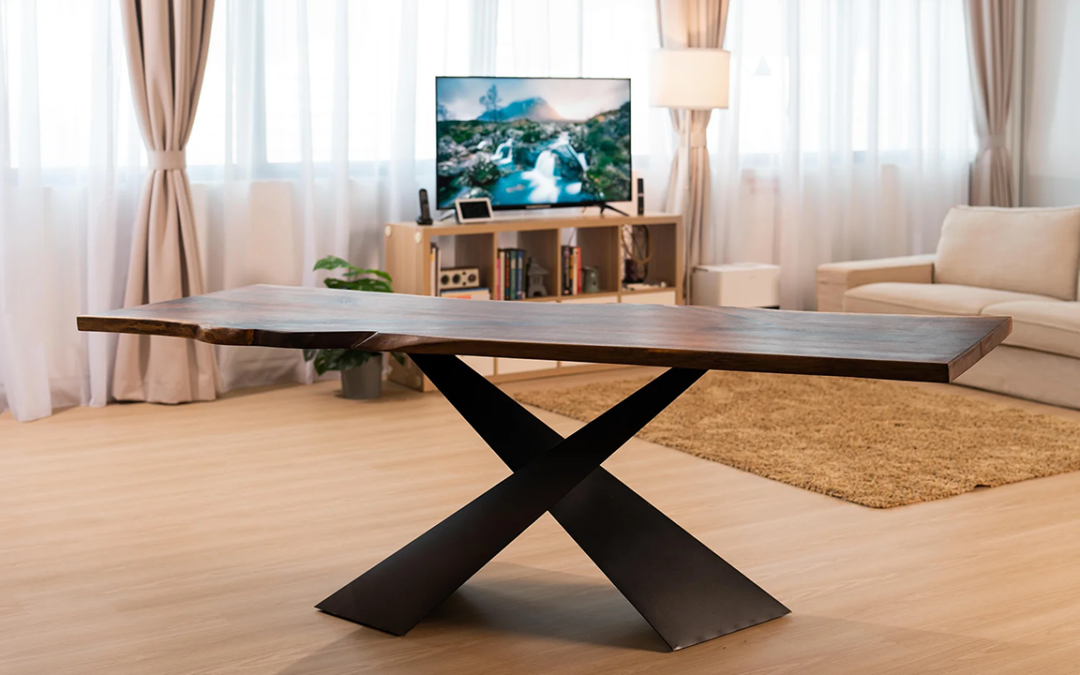A Thorough Consider Dining Table Leg Styles: Locating the Perfect Match
Selecting the appropriate table leg style is crucial for both visual appeal and functional capability. Typical four legs supply timeless style and stability, while the pedestal base offers raised legroom and a modern appearance. For those with bigger tables, trestle legs guarantee strong assistance, whereas hairpin legs present a mid-century modern-day ambiance with their minimal design. The x-shaped legs blend contemporary style with improved stability. Each of these choices brings special benefits, making the selection a lot more than simply an issue of choice. Explore better to discover which design completely enhances your dining area and way of living.
Typical Four Legs
Amongst the various types of dining table leg styles, the standard four-leg layout stays a classic choice for many homes. 4 legs provide balanced support, making certain the table continues to be secure and qualified of bearing substantial weight (dining room table legs).
From an aesthetic point of view, the typical four-leg design can be conveniently adjusted to various indoor designs. Whether crafted from timber, steel, or a mix of materials, these legs can be delicately sculpted, smooth and minimalistic, or anything in between. Their versatility allows them to match both rustic and contemporary setups seamlessly.
Moreover, the uncomplicated framework of the four-leg layout assists in simplicity of activity and positioning within a room. Unlike more complicated bases, this style reduces blockages, giving adequate legroom for restaurants. In recap, the conventional four-leg table leg style marries enduring elegance with useful performance, making it an astute selection for those seeking both form and function in their eating furnishings.
Stand Base
Commonly celebrated for its sophisticated and space-efficient design, the stand base is a prominent alternative to the typical four-leg configuration in table leg designs. This distinct base commonly features a single main column supporting the table top, which can differ in form, from ornately carved timber to streamlined, modern-day steel. Among the primary benefits of the stand base is its capacity to maximize legroom and seating flexibility. Without corner legs, diners are managed greater liberty of activity, making it an optimal selection for round and oblong tables that promote even more intimate and inclusive celebrations.
Additionally, the stand base's central support can deal with considerable weight, allowing for using much heavier tabletops, such as marble or thick hardwood. This stamina paired with its visual versatility makes the stand base a prominent option in both typical and contemporary indoor setups. It can flawlessly integrate with different design styles, from timeless sophistication to minimal modernity. The central column itself supplies a canvas for detailed designs and creative expressions, including a component of visual passion under the table. In summary, the stand base combines functionality with design, making it a fine-tuned and sensible choice for varied eating environments.
Trestle Legs
Trestle legs give a robust and timeless structure for eating tables, defined by their straight click here for info cross-bracing and strong support beams. Originating from medieval times, this design has actually advanced yet retained its vital framework, making it a seasonal favorite in both traditional and modern setups. The central trestle beam of light, often sustained by two or even more upright messages, uses extraordinary stability, enabling for larger table sizes without the demand for extra legs.
A substantial advantage of trestle leg tables is the adequate legroom they supply. Unlike tables with four edge legs, the absence of obstructions at the table's edges provides unobstructed area for chairs and diners, enhancing comfort and availability. This makes trestle tables perfect for suiting larger gatherings, whether in a dining space or a reception hall.
The visual convenience of trestle legs is significant. Offered see here now in a variety of products such as wood, metal, and composite, they can be finished to enhance a broad range of indoor designs. From rustic farmhouse to smooth modern layouts, trestle legs can be tailored to suit specific tastes. Their long-lasting appeal and practical advantages make trestle legs a compelling selection for those seeking both style and functionality in their eating table.
Barrette Legs

The appeal of hairpin legs exists in their simpleness and adaptability - dining room table legs. Available in a series here of products, including steel and brass, they can be ended up in numerous colors to match different interior styles. Whether coupled with a rustic wood tabletop or a modern glass surface, hairpin legs effortlessly mix functionality with a touch of classic appeal
Resilience is one more significant function of barrette legs. Despite their fragile look, these legs are crafted to bear substantial weight, making certain the table stays secure and secure. Furthermore, they are reasonably easy to set up, making them a popular selection for DIY enthusiasts and professional furnishings makers alike.
X-Shaped Legs

Created from products such as steel, timber, or a combination of both, X-shaped legs can be tailored to match different design choices. Steel legs typically lend a sleek and commercial feel, perfect for loft-style apartment or condos and contemporary eating rooms. On the other hand, wooden X-shaped legs supply a warmer, much more rustic charm, suitable for farmhouse or diverse interiors. The versatility in materials allows homeowners to customize their eating tables to much better fit their overall layout plan.
Moreover, the engineering behind X-shaped legs makes certain also weight distribution, decreasing the threat of tottering and enhancing durability. This makes them especially fit for bigger eating tables that require extra assistance. Fundamentally, X-shaped legs mix useful design with modern aesthetics, making them an ageless option for varied dining settings.
Verdict
A detailed understanding of table leg designs exposes the unique features and benefits of each style. Conventional four legs supply security and ageless allure, while stand bases supply legroom and a structured look. Trestle legs make sure durable support for larger tables, and hairpin legs present a mid-century modern visual. X-shaped legs integrate contemporary style with boosted security. Choosing the ideal leg style ensures both useful and aesthetic contentment in any kind of dining space.